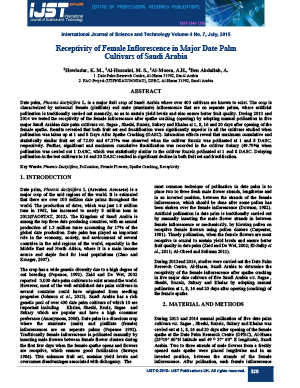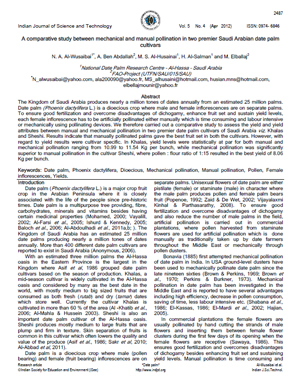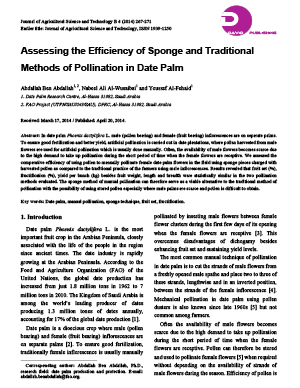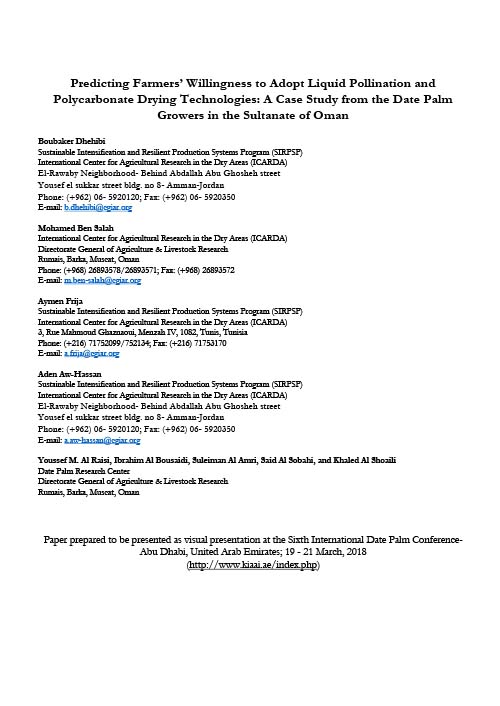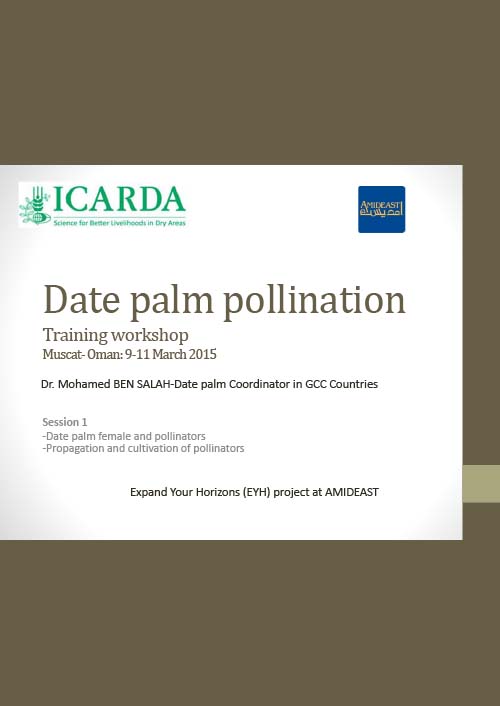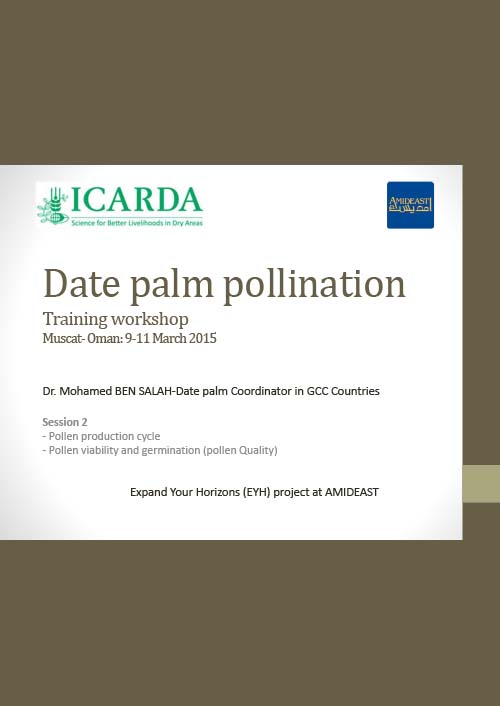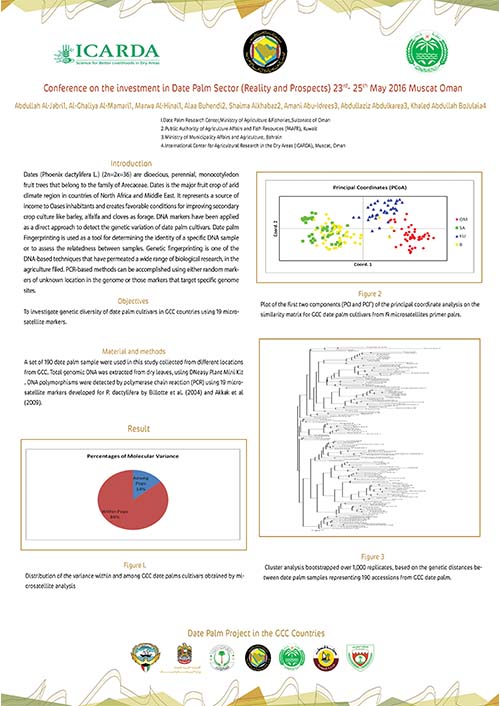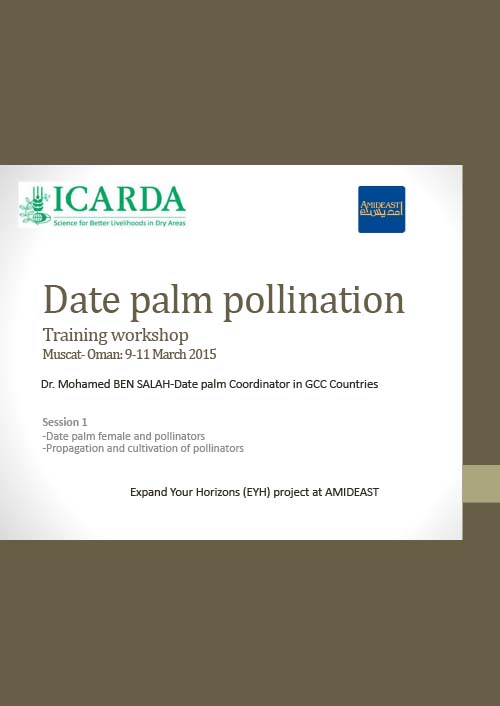00:00:00
Description
Pollination of date palm is normally carried out by hand in almost all date palm groves in Oman. Farmers mostly use various hand pollination techniques. Dry pollination is used utilizing hand and motorized dusters with no negative effect on fruit yield. However, larger pollen volumes are used with the dusters and uneven distribution of pollen grains is found when the palms are tall.
With Liquid Pollination (LP) female trees flowers are sprayed with pollen grains suspended in water using knapsack or motorized sprayers. LP is much quicker, cheaper and equally effective. In addition, the use of this technology contribute to saving time, reducing cost, and consequently, reduces the risk of climbing accidents to laborers.
LP was evaluated economically versus the traditional manual pollination (TMP) for Fardh cultivar based on the data collected from researchers from the Date Palm Research Center in Wadi Quriyat in Oman.
The reduction in pollination cost using LP in comparison with TMP is about 89% and, consequently, a reduction in the total variable costs per hectare against those for manual pollination of about 42-56%.
Economic indicators showed that LP will be highly profitable for Omani farmers. The Net Return (NT) using liquid pollination was very high (+ 674%). The benefit-cost ratio (BCR) is three times higher when using liquid pollination.
ADOPT (Adoption and Diffusion Outcome Prediction Tool) tool was used to focus groups of date palm growers in Sultanate of Oman to predict the proportion of a target population that might adopt an innovation over time. The empirical findings obtained from the LP technology assessment indicates that peak adoption rate for the technology in Al Batinah is predicted to be 95% after a period of 14-16 years. The predicted adoption level in 5 years and 10 years from start is expected to be 35-47% and 86-91%, respectively.
READ MORE
 Coming soon
Coming soon










